Glass and aluminum in sustainable construction – what you need to know
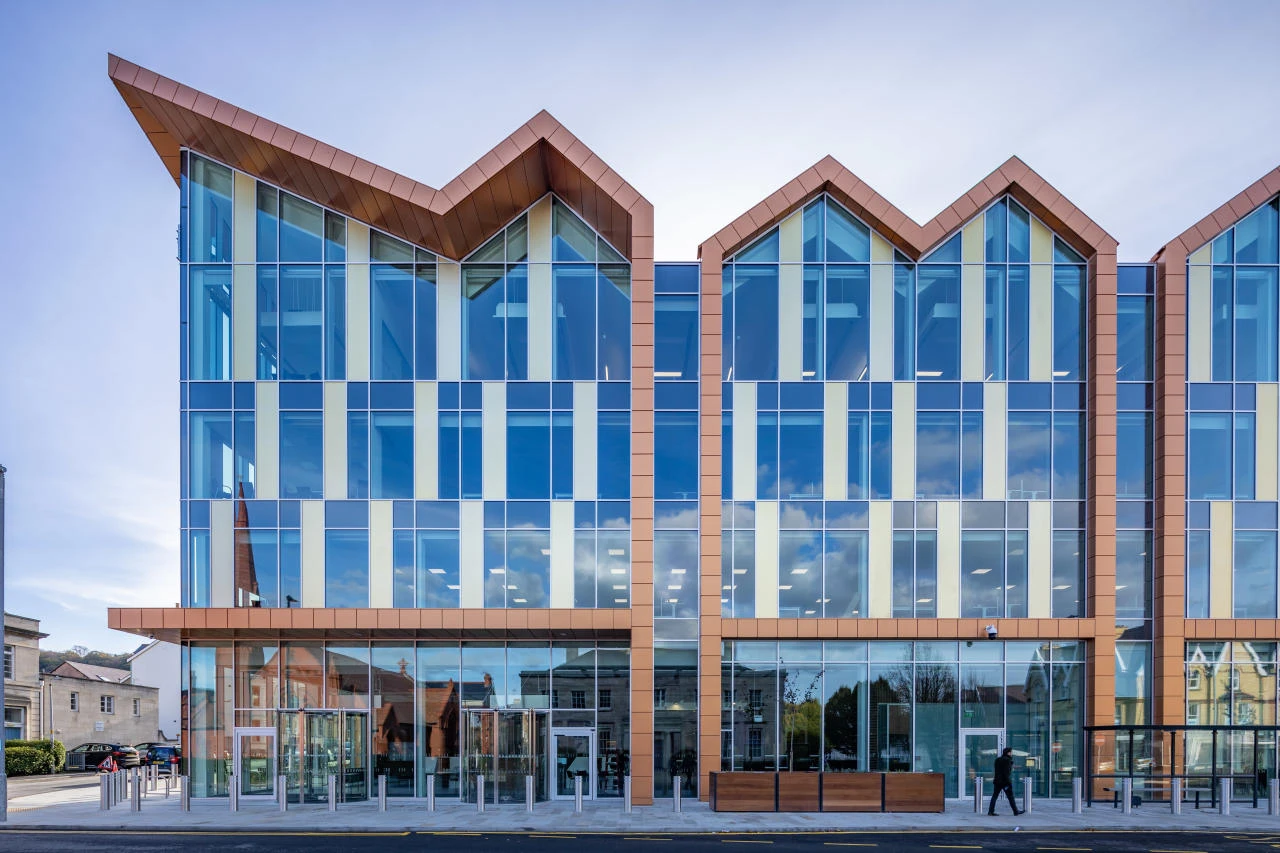
Conwy Council Offices, Conwy, United Kingdom. Systems used: MB-SR50N, MB-SR60N
Modern production technologies have enabled the use of aluminum and glass in sustainable ways. This means that their production and application in construction do not carry negative environmental consequences. Simultaneously, glass and aluminum facades, interior systems, and fire protection solutions offer significant benefits to investors and end-users by enhancing thermal and acoustic insulation while improving user safety. What should one know about their application in contemporary construction?
Environmental advantages of glass and aluminum in construction
Glass is one of the most favored building materials. Its durability and accessibility make it environmentally friendly, thanks to its chemical neutrality and recyclability. Properly prepared, it serves as an excellent insulator. Currently, there is no other widely available material with the same set of characteristics.
Recycling potential
One of the greatest advantages of glass is its ability to be recycled multiple times. In today’s era of sustainable construction and striving for a circular economy, the focus is increasingly on how a material was sourced and its recycling possibilities in case of building expansion or reconstruction.
Both glass and aluminum can be endlessly recycled. Although glass recycling does not offer energy savings as remarkable as aluminum—which can save up to 95% of the energy needed to produce primary aluminum—it still significantly reduces waste. (For glass, the energy savings are about 5%). Glass waste can also be repurposed in myriad ways, such as aggregate in concrete or bituminous materials.
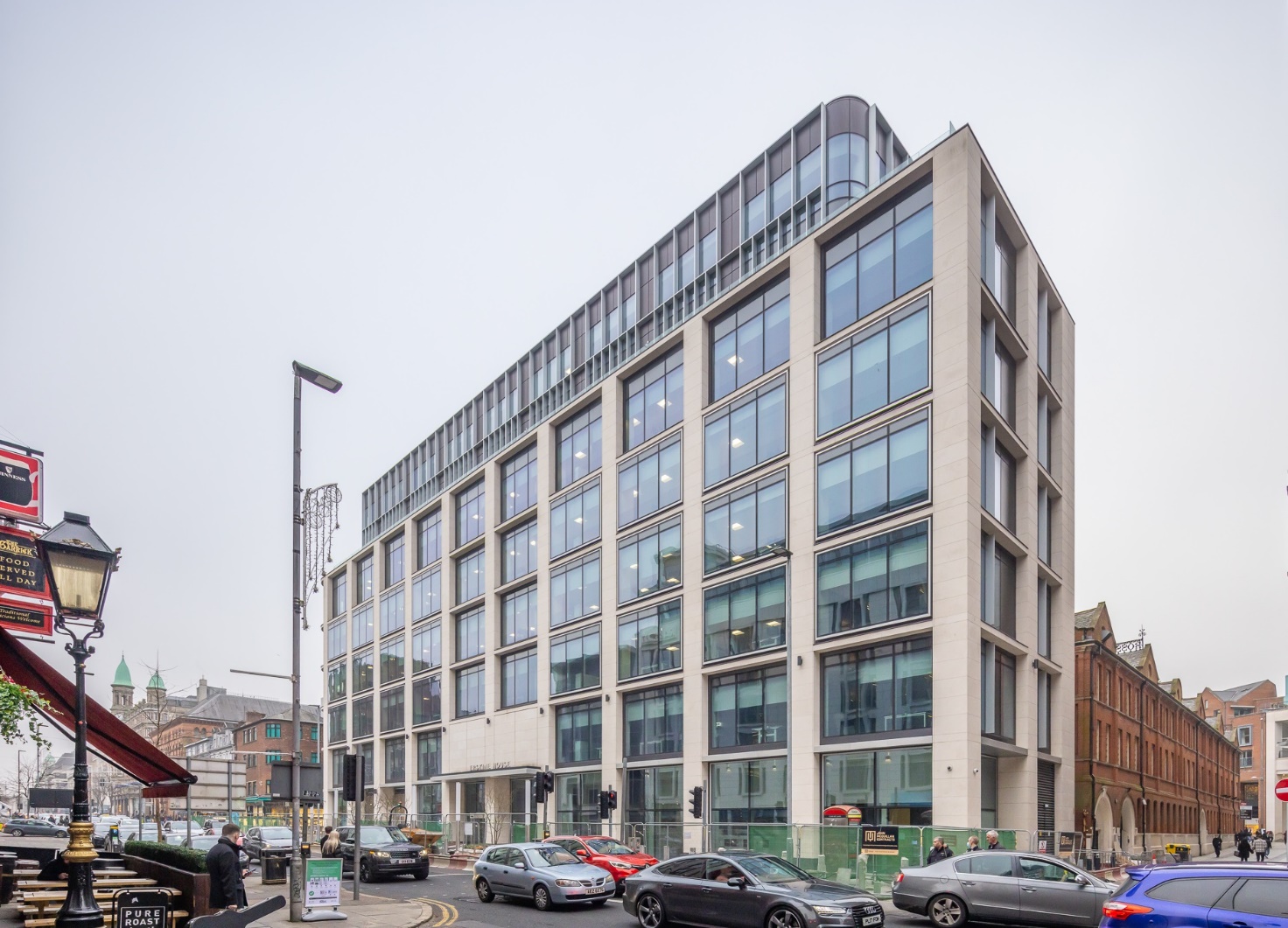
Erskine House, Belfast, United Kingdom. Systems used: MB-SR50N
Superior insulation properties
Historically, glass was not considered a top-notch insulator. However, with the introduction of low-emissivity glass, the scenario has changed. Modern technologies now allow windows, doors, and facade systems to achieve excellent insulation values.
Perfect examples are the column-and-beam facades like Aluprof's MB-SR50N HI system. This system employs specialized dual-component insulators and additional elements made of flexible material, which are affixed to the sides of the screw to minimize airflow in the cavity separating the facade fill. The system can also accommodate large-format glazing.
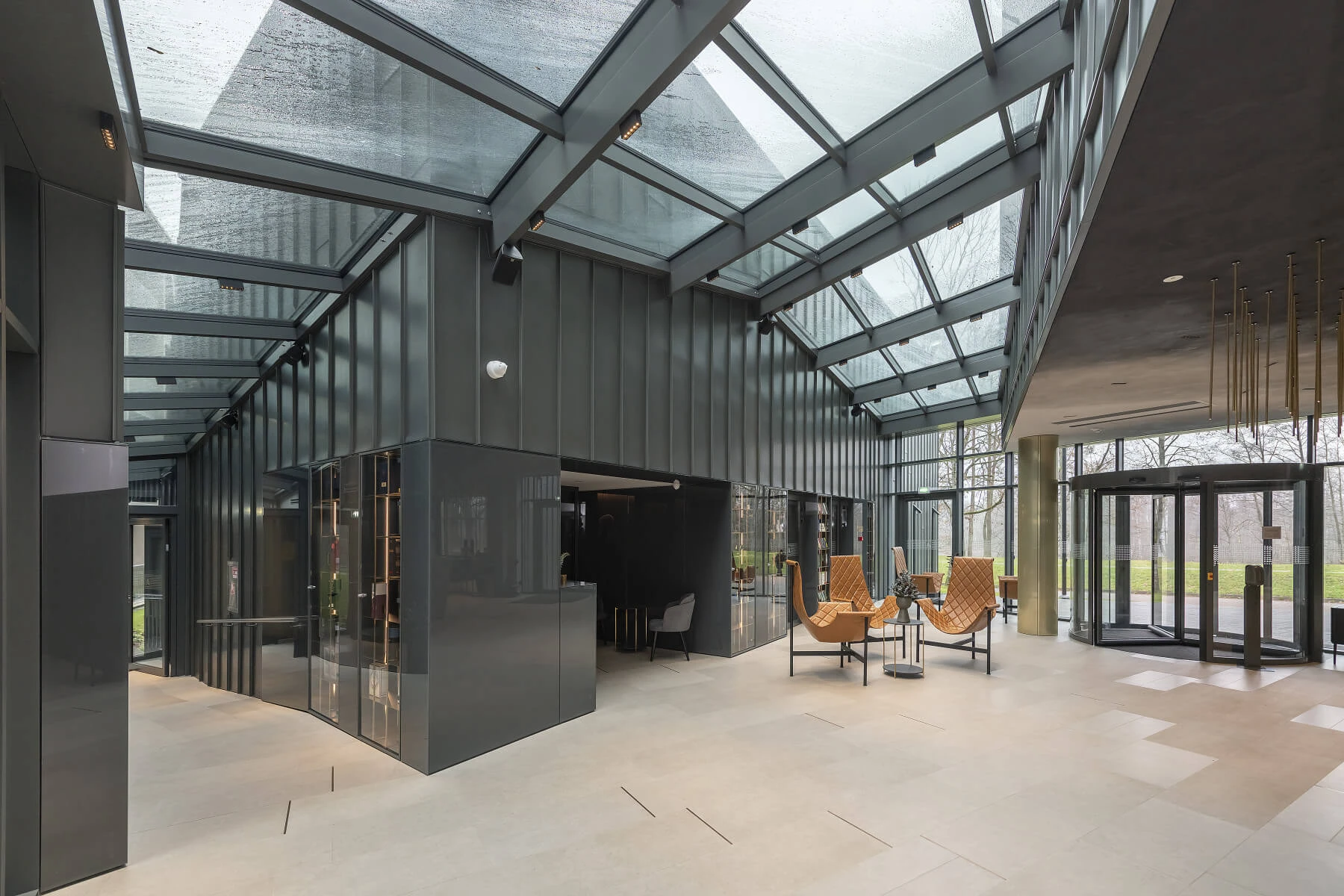
Amberton Green SPA, Druskininkai, Lithuania. Systems Used: MB SR50N RW, MB-45, MB-86 SI, MB-SR50N HI+
User-centric benefits of glass and aluminum
Urban environments have seen rapid growth over the past few decades. The majority of our lives are now spent in cities within enclosed structures, devoid of natural surroundings and subject to increasing noise levels. To maintain individual well-being, buildings must begin to serve new roles by safeguarding residents from the adverse impacts of high population density.
Natural light penetration
The majority of urban inhabitants spend insufficient time in natural lighting. It's estimated that people in developed countries spend about 80 to 90% of their days indoors. Medical research shows that lack of natural light can lower dopamine levels—critical for our sense of well-being—and can negatively impact vision, sleep quality, and increase blood pressure. Office studies indicate that spaces offering ample glazing and natural light exposure enhance worker productivity.
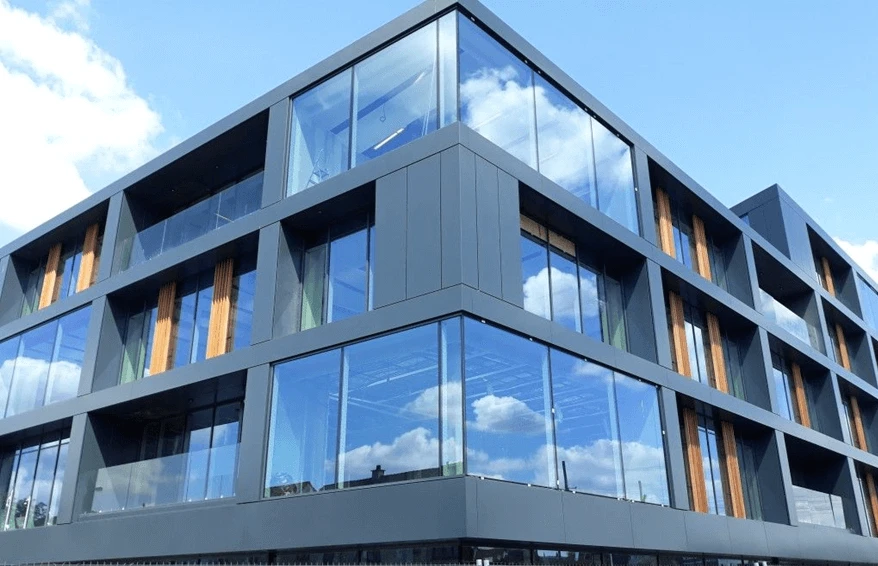
The Link, Antwerp, Belgium. Systems Used: MB-70HI, MB-77HS, MB-SR50N EFEKT, MB-SR50N HI+
Durability and safety
In the event of a fire, the structural solutions implemented in buildings determine whether people can safely evacuate. Aluprof's smoke vent windows and flaps are such solutions, aiding in the rapid expulsion of smoke and toxic fumes, thereby safeguarding health and life. Applicable in standalone constructions and as part of aluminum facades or glazed roofs, these systems enhance building safety.
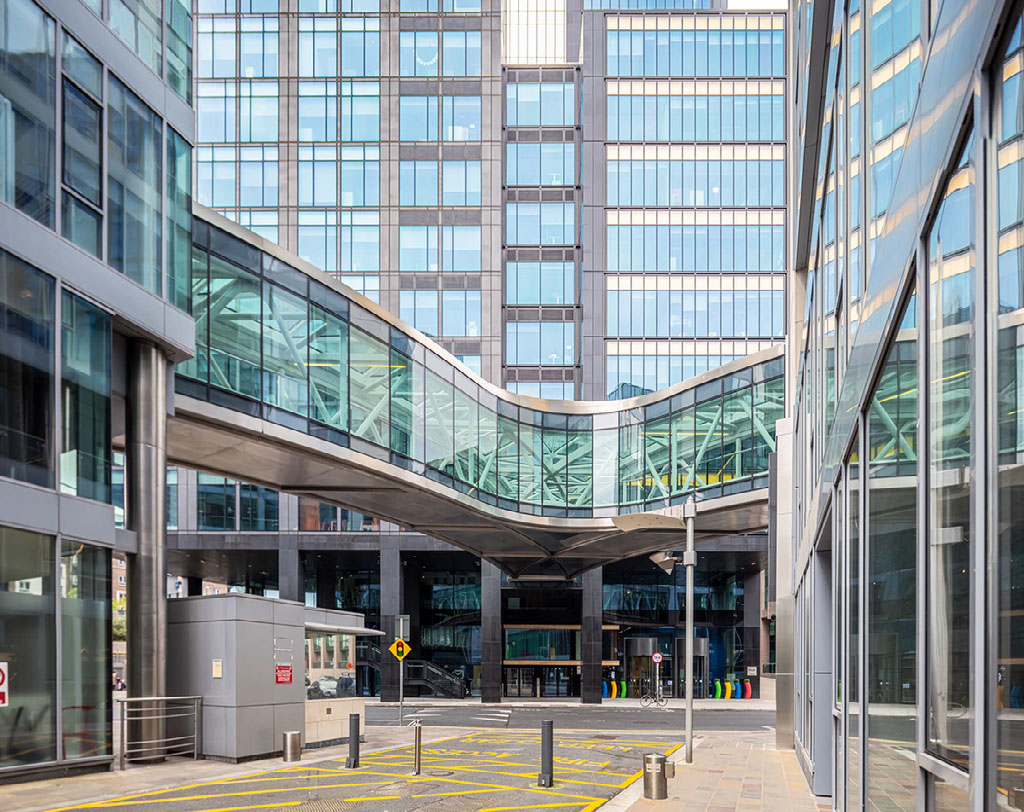
Google Campus, Dublin, Ireland. Systems Used: MB-SR50N
Noise pollution reduction
Noise pollution in large cities is a growing concern, affecting the quality of life and health. Chronic noise exposure can lead to a variety of health issues and impact the natural environment. According to the European Environment Agency (EEA), noise is the second most significant environmental threat to health after air pollution. Around 125 million Europeans are exposed to harmful noise levels above 55 decibels (dB).
To mitigate this problem, appropriate glass and aluminum solutions can be effective. As facade materials and internal partition walls, they can significantly reduce noise. Aluprof's MB-Harmony Office system, for instance, meets heightened acoustic requirements providing insulation levels of Rw 48 dB/ Ra1 46 dB.
Glass with thermal insulating properties and aluminum solar shading systems can also ensure optimal control over interior heating, contributing to reduced energy usage. A new brand, Glassprof, has emerged in the European market for the production of fire-resistant glass and architectural glass processing, and it is part of Aluprof.
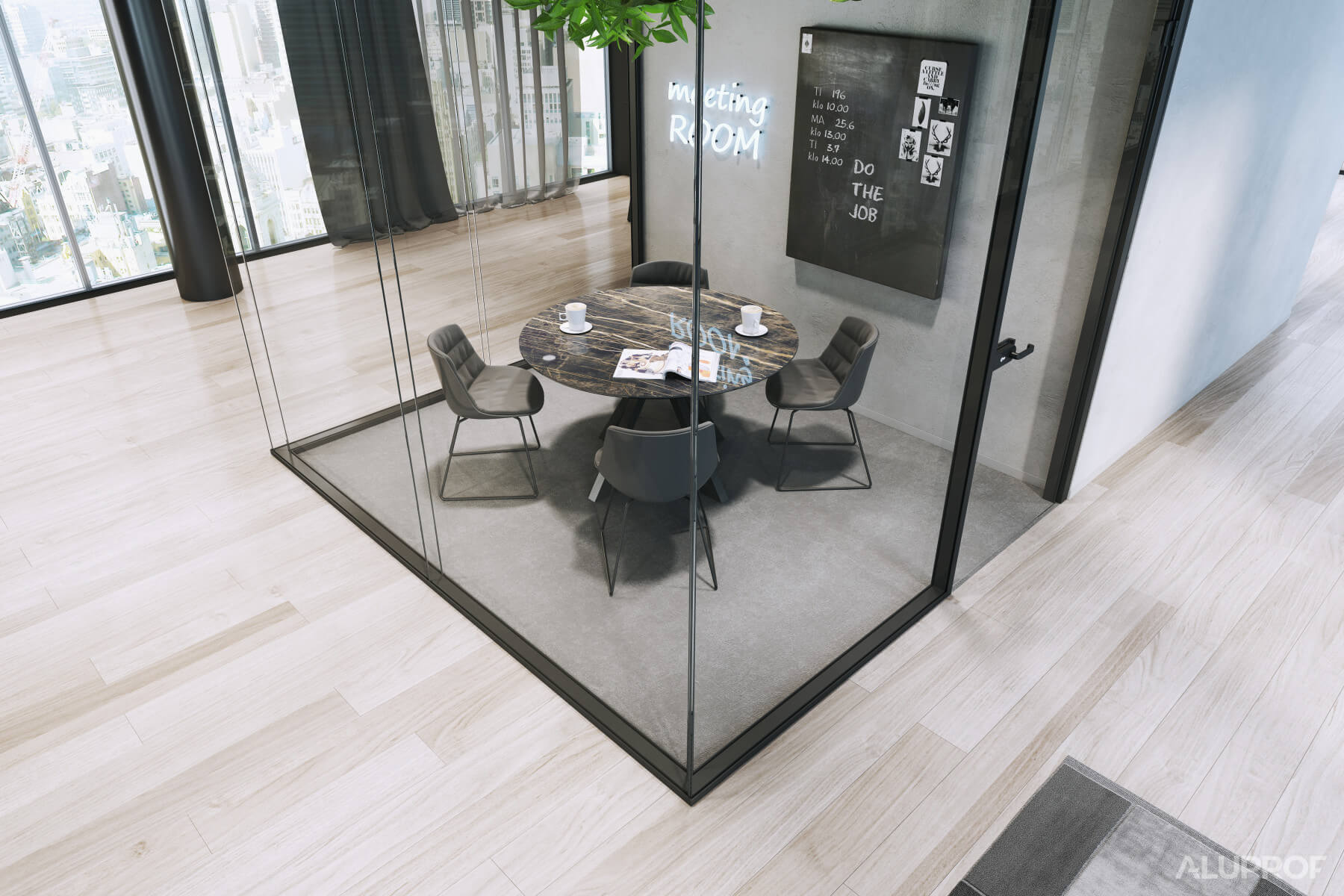
System: MB-Harmony Office
Let’s Build a Better Future
The combination of glass and aluminum in sustainable construction offers numerous benefits. Aside from the aesthetic appeal that enables the creation of modern and attractive facades, these materials are characterized by their durability and low maintenance requirements. Structures made from glass and aluminum are designed to last, minimizing the need for frequent repairs. Moreover, both materials are resistant to environmental factors and external conditions, which enhances their longevity.
